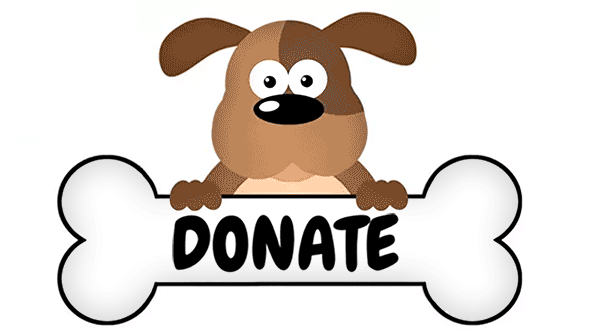Puppy Advice
To raise a well-adjusted dog, there are some things you should start doing with your puppy as soon as you bring him home, so that she is well on her way by 16 weeks. These are tips on what you can do right away, but also don’t forget to check the resources at the end.
Puppy Kindergarten
Even if your puppy hasn’t completed all of his vaccinations, it’s important that he meet other dogs and people, and that these be good experiences. Starting Puppy Kindergarten that uses positive methods, as early as possible, can help prevent all sorts of problems later. It allows for socialization in a safe, controlled environment. You will learn how to read your puppy’s body language, so you know when he is excited, anxious, merely tolerant or has had enough. Puppies are like sponges that learn the skills you train easily, and this training helps you teach your puppy what you want him to do, instead of correcting him all the time. In Puppy Kindergarten, common puppy problems and solutions are discussed. And perhaps most important, you and your puppy can build a relationship built on trust right from the start. For more information on why starting early is so important, go to the position statement on puppies by the American Veterinary Society of Animal Behavior. Click here to see our available Puppy Classes.
Searching for a trainer in another location? Try these resources!
https://petprofessionalguild.
https://karenpryoracademy.com/
https://peaceablepaws.com/
https://academyfordogtrainers.
Socialization
Get together with friends who have healthy, vaccinated dogs. Have people over – all ages, races, with and without beards, with and without hats and coats, etc. As your puppy gets older, have him on various floor surfaces, in an elevator, around traffic and bicycles. You get the idea. If you have a fearful or timid puppy, don’t force him into a situation that makes him uncomfortable. Whether your puppy hides or lunges, don’t yell, punish or yank at his leash. Think of it as a signal that you’ll need to help him develop good associations with whatever he reacted badly to. So, next time, give him pea-sized treats in rapid succession the entire time that he is around what frightens him. Socialization can only have the desired effect if your puppy has GOOD experiences; bad experiences can create fears and anxiety. So, supervise your pup closely and don’t put him in situations where another dog, stranger or child could bite, scare or harass him.
Bite Inhibition
Puppies have sharp teeth, and they nip. It’s natural. But if you don’t teach bite inhibition now, it could be a problem later when his bite could really hurt someone. Puppies primarily bite to get our attention; they want us to interact with them. So we need to make sure that we aren’t inadvertently rewarding nipping. If attention is the goal, then your attention is the reward. While some people will suggest that you yelp or say “ouch,” it’s important to realize that this doesn’t work very well for many puppies. Most hear that noise and think: “Great! Now we’re playing! Game on!” If you yell, you have unwittingly joined in the fun.
When your puppy nips, keep your cool. Don’t look at your puppy, don’t talk to your puppy, and don’t yell at your puppy. You have a few other options. You can calmly get a toy, put it in his mouth, and engage in appropriate play. This says to your puppy: “No, you may not bite my hands (or feet or arms…), but you can chew on this and I’ll give you my attention.” If no toy is nearby, you will want to simply get up and quietly walk away from your puppy to find a toy. Sometimes just walking away by itself will send a clear message.
Resource Guarding
Some dogs growl or bite when things are taken away from them (toys, food bowls, bones) or when you get in “their” space (on the bed or sofa). They should learn not to guard resources as puppies, so it doesn’t crop up later. When you feed your puppy, go by after a few minutes and put a really good food (maybe chicken) in the bowl. After a while, pick up the bowl before he is finished eating, put chicken in, and return it to him. He will get the idea that if you take something from him, he can expect something even better coming back. If your puppy grabs something you don’t want him to have, don’t chase him. If you do, it’s a game. Instead, trade him for something even better while teaching him the words, “drop it”. I want my shoe, but you can have this yummy chicken.
Touch
You will need to touch your puppy all over his body, including in his mouth and between his toes. Puppies can get used to being touched all over, which makes it a lot easier for the vet or groomer or when you give him pills or brush his teeth. It’s much easier to work on it now than to have a touch sensitive dog later. You don’t want him to whip around to snap or bite just because he was touched where he doesn’t like it.
Resources
“Kidnapped from Planet Dog” – an article in The Whole Dog Journal that will open your eyes to what it’s like being a puppy in a totally strange, new environment.
“The MOST Important Thing to Teach a New Puppy” – an excellent video introduction to puppy socialization
The Puppy Socialization Project with articles and handouts, including
how to choose experiences for puppy socialization and body language in puppies
Goodnight Pup’s blog on puppies – a short, clear article and video on puppy socialization
Your Dog’s Friend Webinars:
Learning How to Raise a Happier, More Confident Puppy
Strategies for Living With Your Puppy & Staying Sane at the Same Time
Puppy Socialization Position Statement by the American Veterinary Society of Animal Behavior




